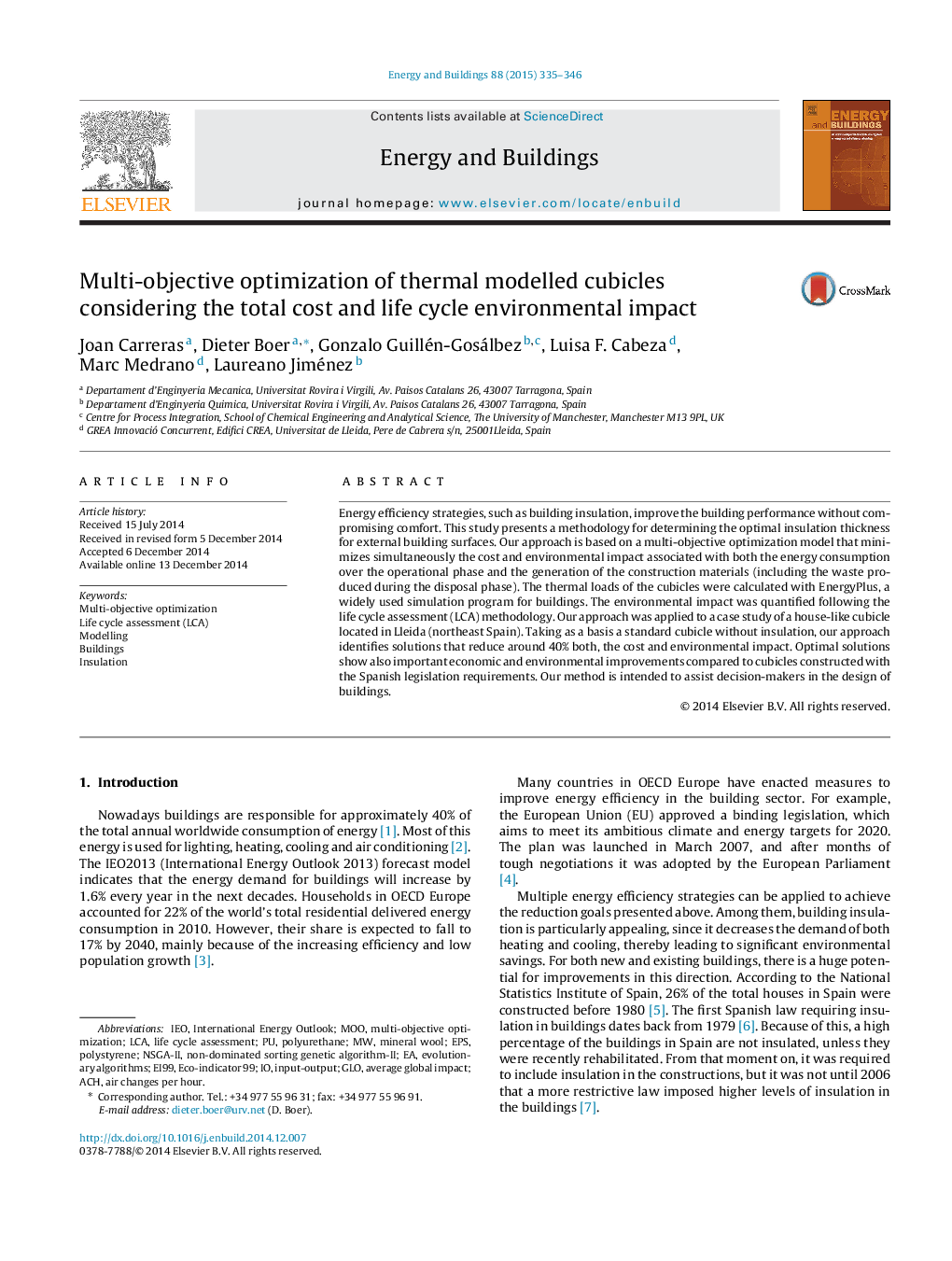| Article ID | Journal | Published Year | Pages | File Type |
|---|---|---|---|---|
| 6732542 | Energy and Buildings | 2015 | 12 Pages |
Abstract
Energy efficiency strategies, such as building insulation, improve the building performance without compromising comfort. This study presents a methodology for determining the optimal insulation thickness for external building surfaces. Our approach is based on a multi-objective optimization model that minimizes simultaneously the cost and environmental impact associated with both the energy consumption over the operational phase and the generation of the construction materials (including the waste produced during the disposal phase). The thermal loads of the cubicles were calculated with EnergyPlus, a widely used simulation program for buildings. The environmental impact was quantified following the life cycle assessment (LCA) methodology. Our approach was applied to a case study of a house-like cubicle located in Lleida (northeast Spain). Taking as a basis a standard cubicle without insulation, our approach identifies solutions that reduce around 40% both, the cost and environmental impact. Optimal solutions show also important economic and environmental improvements compared to cubicles constructed with the Spanish legislation requirements. Our method is intended to assist decision-makers in the design of buildings.
Keywords
Related Topics
Physical Sciences and Engineering
Energy
Renewable Energy, Sustainability and the Environment
Authors
Joan Carreras, Dieter Boer, Gonzalo Guillén-Gosálbez, Luisa F. Cabeza, Marc Medrano, Laureano Jiménez,
